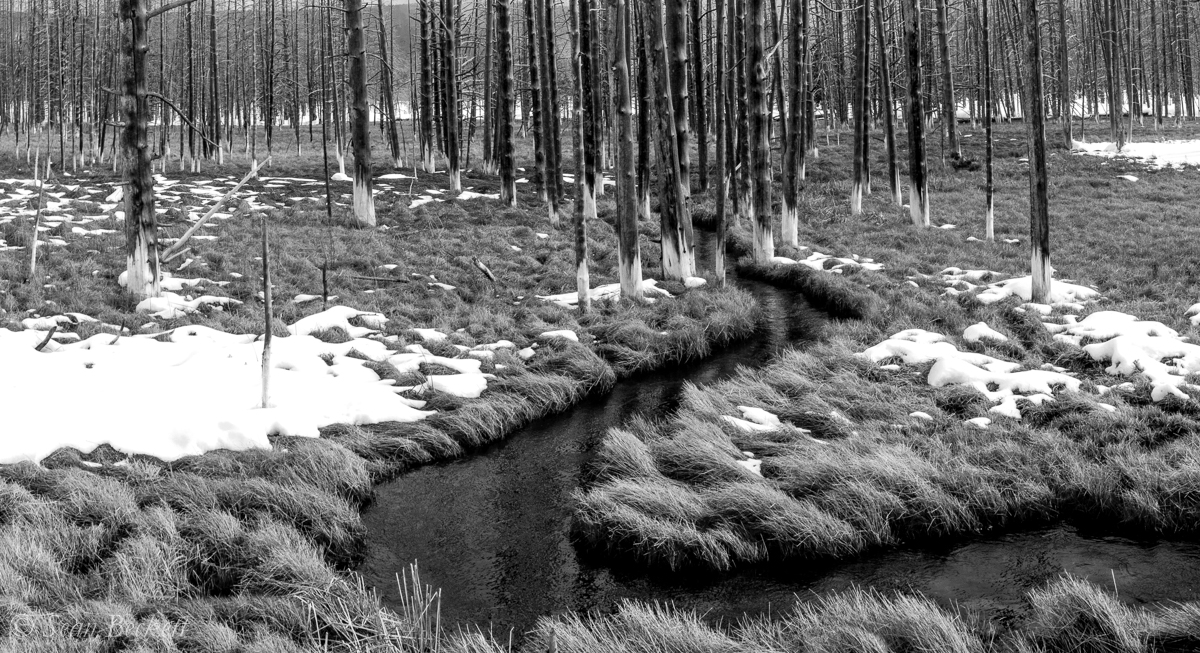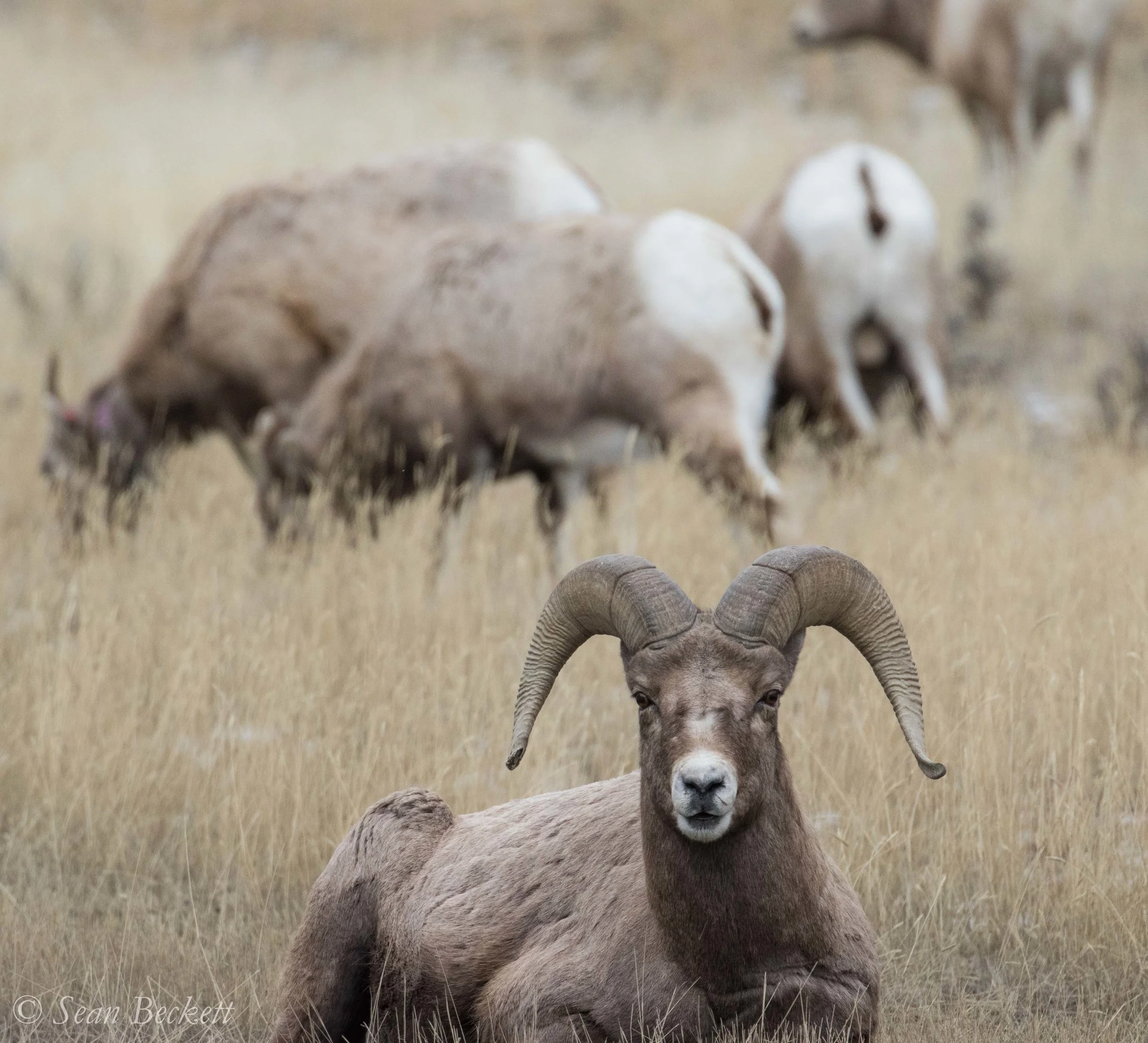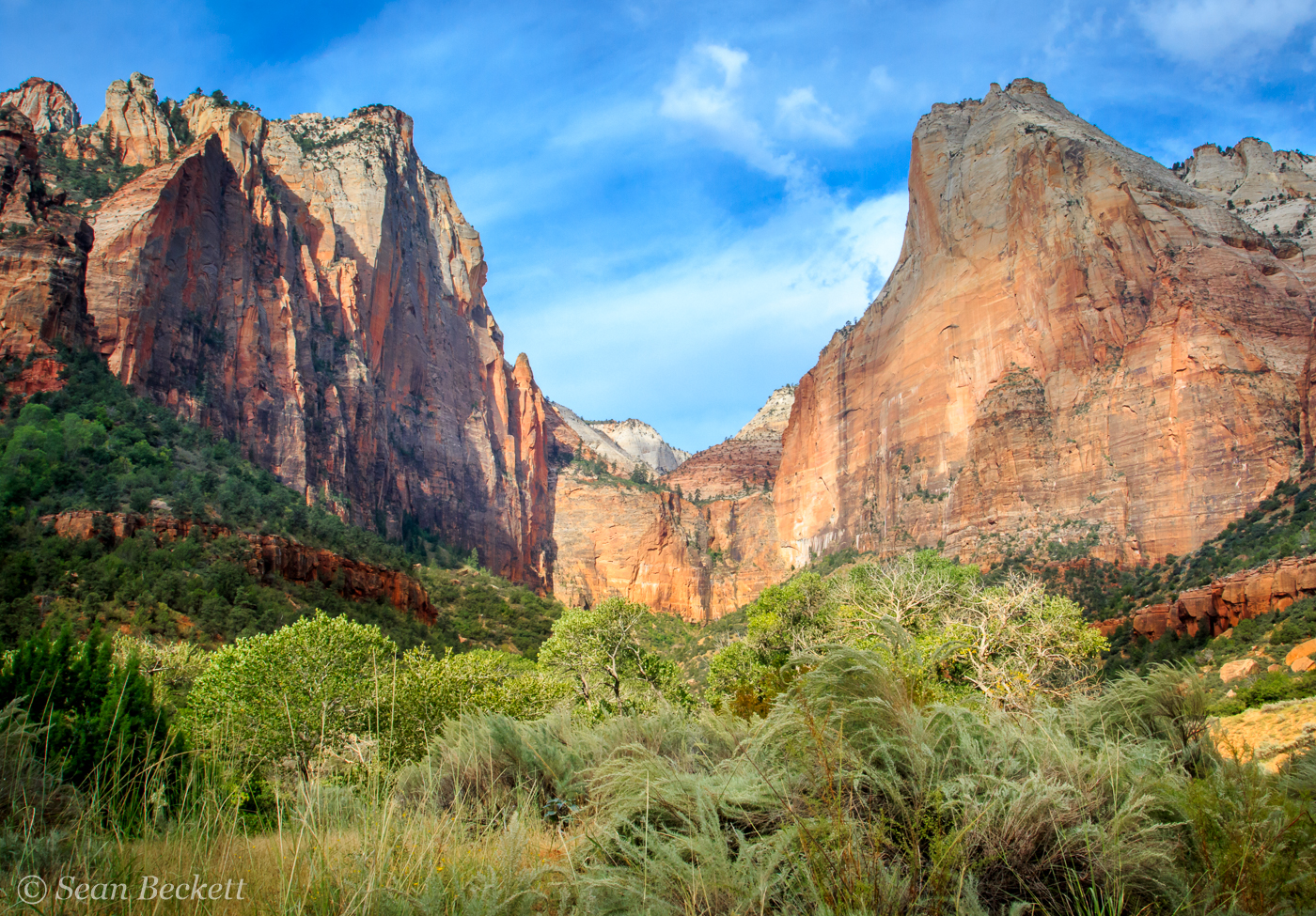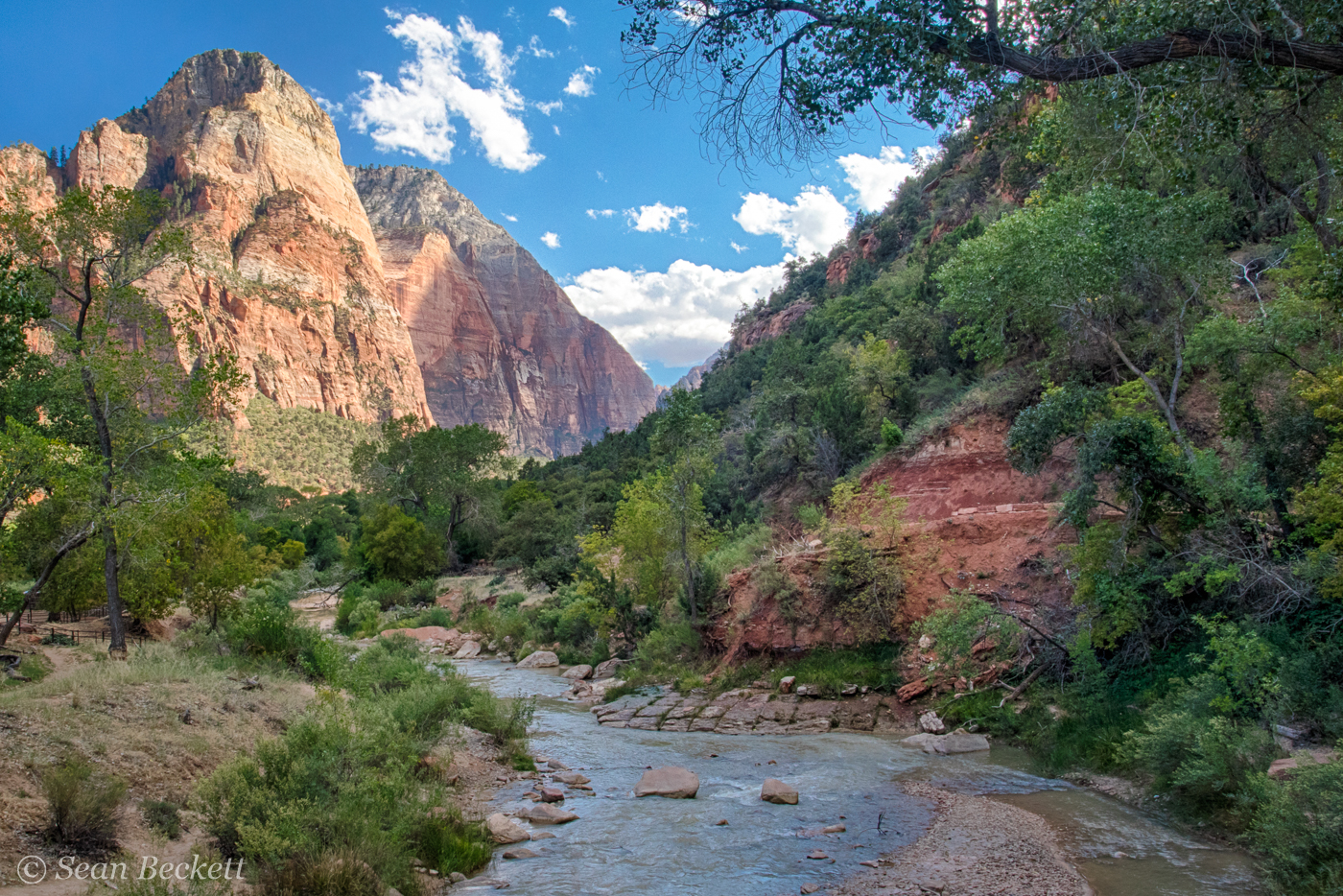I am now back in Vermont after a third successful expedition with Natural Habitat Adventures / World Wildlife Fund. In many ways, this trip was the culmination of a month of patience, searching and learning in the Greater Yellowstone Ecosystem. Among other highlights were a pair of coyotes pouncing on lake trout, good sightings of the Lamar Canyon Pack, and the only bobcat seen along the Madison River this winter. Rarer still, we had Midway and Lower Geyser Basin (aka Grand Prismatic Hot Spring and Fountain Paint Pots) completely to ourselves on one -15F morning.
Yellowstone in Winter - Pt 2
Another beautiful, profound week in Yellowstone full of wildlife interactions and snowy conditions. Our guests saw coyotes fishing for trout in the Madison River, foxes courting in the Tetons, bison fording swift rivers, and wolves traversing fifteen miles of winter landscape in a single night. Here are some of the photo highlights.
Yellowstone in Winter
Photographs from the first of three photography expeditions in Yellowstone this winter with Natural Habitat Adventures / World Wildlife Fund. Enjoy!
Autumn in Vermont
Some photo highlights from the last couple weeks of nature and fall photography programs. Enjoy!
Canyons of the Southwest: Part 2 - Zion Canyon
Highlights from September's trip into Zion Canyon with Natural Habitat Adventures / World Wildlife Fund.
Canyons of the Southwest: Part 1 - Bryce Canyon
In 1923, Michigan Congressman Louis B. Crampton was invited to give an address at the American Automobile Association about the unmatched beauty of southern Utah. His words about Bryce Canyon capture the feeling of this place better than any others I have read. So instead of writing my own ode to the Southwest, I'll let you enjoy his.
“Sit with me here near the chasm's brink as the sun drops low. Before your fancy presents to you the city beautiful, the myriad forms left in the disorder of chance after centuries of erosion resolve themselves into something planned . . .. The architecture is all in harmony. Great buildings rising hundreds of feet, passageways, sometimes but a few feet wide, separating one structure from another, but the walls erect and accurate, story upon story. From Acropolis Hill see how the grade drops rapidly to the waterless river bed which is parked so plentifully with trees on either side of the watercourse. Rising then abruptly to the right from the river are vermillion cliffs, where the palace of the king appears, surrounded by great turreted walls, a steep approach leading to the castle itself, nestling close against the barren cliff. There is no sound; no smoke arises; nothing in motion but the circling cliff swallow. It is simply the ideal of fancy.
The sun has gone. Darkness falls closer and deeper and the fine tracery of the architecture dims from sight, only the lighter shades of some of the buildings holding prominence. Still you can see the great commanding outline of the fortress and in the center the white of the crowning Acropolis. The swallows are no longer flying about . . .. There are no tones, no lights from below; only the splashes of white upon the dark background, set off with darker markings of the tree areas. The city of fancy is asleep.
At midnight we cautiously approach again the rim and watch, while far in the east over Acropolis Hill a glow enriches the horizon. Soon a silver point comes to view, like a star of hope for the darkened city. Rapidly rises the majestic moon that whitens the night and brings out formless shapes of the city but does not lighten. It mounts to the heavens and the city to the west of us reflects it dimly. It is a spectral city, and the watcher under the rays of moon, the million wonders of the Milky Way, and all the stars overhead, comes to imagine an occasional moving in the tenantless homes. But there is nothing in the city but night.
Up again and to the watcher's post; the day is dawning. A rosy hue in the east; an orange glow over Table Cliff Plateau; to the right a group of clouds which simulate a snowclad range of peaks for a time and then revert to cloud banks, reflecting rosy tints, as mounts the orb of day.
Before you now in glare of day is a prehistoric city of Babylonish splendor. It seems to have been covered with the sands of ages and appears now as if largely revealed by recent excavations still to be completed, banks of earth still in part enshrouding edifices and walls the impression mounting that further beauties are yet to be revealed.
Far in the east you see the modern Utah town of Tropic, surrounded by its fertile green fields, a touch of reality to bring fancy back to earth. But the spell of Bryce Canyon hangs long in your memory. [194]”
Shelburne Farms at Night: Photographing the Milky Way
One of my favorite pastimes is being alone in beautiful places, yet our most inspiring landscapes are often rather crowded in the daytime this time of year. So last night I went to Shelburne Farms after hours to enjoy the rolling hills and architecture all to myself, and experiment on a new photographic subject-- the Milky Way. Of course, the night sky doesn't look quite this dramatic to the naked eye (unless you're in a remote area with zero light pollution). Yet thanks to ever-improving digital camera technology and old-fashioned long exposures, our cameras can capture and store data that our eyes simply can't.
Astrophotography is a real joy for those of us who started out shooting and developing our own black-and-white negatives. In most cases today, the LCD screen removes all the anticipation (not to mention much of the skill) from our craft by showing the photographer a real time preview of each image--No more bated breaths hunched over a bath of developing fluid. With night photography, the artist becomes an alchemist once again. Our LCD and histograms help confirm exposure, but no boilerplate Jpeg processor or camera preview knows how to render all the detail stored within each pixel.
Burning and dodging in Adobe Lightroom, the cosmic haze of 100 billion stars appears from blackness. I've been spending a lot of time at Shelburne Farms these days to scout locations for a "Photography for Naturalists" workshop i'll be leading in October (find out more about that here, by the way). In this workshop, I teach strategies for using photographic techniques to develop a deeper, keener connection with our natural world. My afternoon in front of the computer screen, plumbing the depths of the galaxy with brushes and sliders, has been as existential a journey through the cosmos as some of the finest nights spent on a blanket, staring up at the stars.
Scouting at Shelburne Farms
In anticipation of a fall "Photography for Naturalists" program I'll be leading on October 20th for Shelburne Farms, I decided to get familiar with some of the far corners of this spectacular property. These photos were taken in the early afternoon on a hazy day-- one of the most challenging lighting scenarios for photographers. I opted to focus on black and white compositions, as the washed-out colors in the landscape distracted from the beautiful leading lines and patterns that I wanted to emphasize. Special thanks to landscape architect Frederick Law Olmsted for designing these picturesque landscapes.
Scouting, Part II
Some more scouting for fall photography locations around the Stowe and Waterbury Valley last week.
Bingham Falls on Smuggler's Notch in Stowe, VT
A small waterfall in a pothole of Miller Brook up near the top of Nebraska Notch in the Mt Mansfield State Forest.
An hours-old monarch chrysalis. Stay tuned for the big reveal in a couple weeks!
Scouting Waterfalls
I've been out and about in Washington and Lamoille County scouting locations for some upcoming autumn nature photography programs i'll be hosting for the Green Mountain Club. Today's batch is from Moss Glenn Falls in Stowe.





Peace and Dragonflies

A Lancet Clubtail (
Phanogomphus exilis
)
Few find bliss among dragonflies. I found it last week when a Common Baskettail darted over my shoulder to snatch a horsefly from its endless orbit around my head. Allison and I were sitting on a ridgetop midway into a weeklong paddle through the bog lands of the western Adirondacks. From this vantage point we contemplated the momentous transitions in our lives that this trip punctuated. Each tamarack and stream inlet represented a different anxiety or accomplishment—the end of my graduate studies and the beginning of Allison’s; the bated anticipation of a job offer; a half dozen half-baked ideas for small entrepreneurial ventures.
This spring and summer has sent me grasping for perspective and direction, and we found it unexpectedly among the lily pads and bog mats. Here whirrs a frenetic world in miniature, where overlooked animals play out a high-stakes and uncertain game. Each day introduces a suite of new challenges to tiny beasts whose struggles and achievements may strike us as surprisingly familiar and resonant.
For an hour I watched another Baskettail defending a territory the size of a throw rug. His entire thrust and life force for the evening was to intercept every insect, sparrow, and hemlock needle floating through his airspace. He avoided my shadow, darted from my sudden movements, and occasionally caught the bugs buzzing about me. But he had no concern for my canoe trip. Even if he had the neural capacity to do so, it wouldn’t change his directive: to annihilate everything in defense of the fragile eggs in the sedges beneath him.
His obliviousness to my world was oddly peaceful to me, perhaps because people share this ignorant quality with dragonflies. After all, we almost never concern ourselves with the aspirations of the bugs around us. That which falls outside our own throw-rug territories is of little consequence. Even if I fixate on the dragonfly for a while, it hardly changes the itinerary of my trip or the responsibilities I left at home in my inbox. The dragonfly is doing his thing while I do mine. I find humility and sanity in sharing a small beach with something that is so incredibly unlike me, yet equally engaged in the common problem of living well.
The next evening, the persistent wind stalled for an hour, and the water between the lily pads reflected the sunset. The watershed is prolifically stocked with largemouth bass, which we were out to catch. I changed from fly to fly in fruitless attempts to mimic whatever mysterious hatch the bass were targeting. Giving up, I turned my attention to the armada of dragonflies that had materialized, strafing low over the water lilies. Every few seconds, one would dip toward the water and tap her abdomen, laying a single egg against a lily pad or the surface tension of the pond. As one flew alongside our canoe a foot off the water, the pond surface shimmered, lifted, then erupted into a gape of teeth and gills engulfing the dragonfly. The bass somersaulted through the air and violently splashed back into the water. Soon the entire shoreline of the shallow peninsula roiled and splashed with hungry bass—an ephemeral warzone of propagation and predation unfolding under the glowing orange clouds of the most serene summer evening.
Days later and twenty miles downstream, we lazily puttered our canoe through backwater ponds tacitly delaying our inevitable return ashore. Turning again to nature to exercise some mindfulness in the face of our impending appointment with civilization, we were greeted by damselflies. A handful of these fragile, diaphanous sprites lit on my fishing pole, and my life preserver, bracing against the gale headwind generated by our meandering boat. Each lily pad around the canoe supported a damselfly standing over its collapsed exuvia—the exoskeleton of the wingless, aquatic nymph life form from which it transformed and emerged from moments ago.
Each of the delicate damselflies on the lily pads had a mother that survived the jaws of the largemouth bass, and a father that heroically and tirelessly defended it as an egg. Each nymph climbed up onto these lily pads having survived months or years underwater, low on the food chain, outliving ninety-nine percent of its siblings. When I accidentally knocked one off the canoe into the water, I felt a strange empathy and heartache that I’ve never before extended to a bug. We plucked him out of the water, draped him over my backpack to dry, and headed for the take-out.

An adult damselfly standing over the discarded shell of its former self.

Dragonflies, mayflies, caddisflies, and stoneflies all live the majority of their lives as these small, predatory nymphs, clinging to rocks and reeds underwater for months or years. They crawl out of the water and emerge from their own exoskeletons into their final winged forms, living a few more short days or weeks as breeding adults. This is the discarded husk of a transformed dragonfly.

A bluet damselfly (Genus
Enallagma
). Notice the eggs under the abdomen.

Common Baskettail (
Epitheca cynosura
)
Adirondack Life Forms
Photographic encounters from a week of paddling in the Adirondacks.

An adult mayfly trying to break itself from the surface tension of the water. This insect is a prime fish food, and a bug that many fishermen mimic when tying flies to match local insect patterns.


Silver-bordered fritillary butterfly on orange hawkweed.

Sheep laurel in full bloom. Each flower has ten pollen-covered, spring loaded stamen that are triggered when a butterfly roots around in the flower for nectar. The stamen whack the butterfly in the head, covering the insect's face in pollen. When the butterfly visits another plant, the butterfly pollinates it with the previous flower's pollen.

A loon approaches to escort us off his territory. Loons are extremely defensive and excellent divers. They have been known to skewer trespassing ducks from underwater.

Can anyone help with the ID on this one?

Canada tiger swallowtail drinking nectar from this hawkweed using its long tube-like proboscis.

A Northern Crescent on a goldenrod.

A carnivorous sundews in the bog. The pink hairs are tipped with a sticky glue that traps insects. This glue is a focus of some biotech companies seeking to reverse-engineer potent natural adhesives.

Evening bass fishing from the shores of Low's Lake.
A Welcoming Committee

This is a repost from my short piece for a recent edition of the
Burlington Conservation Newsletter
. Enjoy!
One warm winter afternoon each February, an enthusiastic chickadee reminds us of a bygone Vermont. Its “feeee-beee” song is a delightful protest against months of austere soundscapes. Like a perfect brushstroke on an empty canvas, the song’s beauty is its simple counterpoint to the wind in the treetops, the distant rush-hour traffic, or the crimping of footsteps in the snow. After months of slush, snow, and sticks, many of us have only the foggiest recollections of why we call this place the Green Mountain State. But the chickadee, ever the optimist, sings to remind us that the seasons will change soon enough—and it’s about time to clear the throat.
That change came all at once last Saturday. Practically overnight, our soloist was joined by an orchestra of neotropical voices. A cloud of song sparrows, eastern phoebes, and early pine and palm warblers fell from a passing cold front into the city’s treetops. These advance spring migrants now scarf up early insect hatches and position themselves to defend empty real estate in every cranny of Burlington’s open space.
This time of year, Ethan Allen Tower becomes an air traffic control center. Visitors of the tower are buzzed by turkey vultures and tree swallows, just in from Florida and Mexico. Warblers and vireos from the West Indies leap-frog through the canopy at eye-level with the tower’s crenelations. In a couple weeks, flights will be landing from Brazil and Patagonia. The international diversity in Burlington’s human population has got nothing on that of Queen City birds.
Our gritty chickadee earns his Burlington summer by surviving five months of cold unpleasantries, often cooped up in the hollow of some old maple tree. Yet as he is rewarded with the first lungful of fresh warm air and spring sun, he suddenly finds himself up to his wings in strangers from across the hemisphere. As yellow warblers arrive from Florida to size up our resident chickadee, I’m reminded of my Californian aunt’s midwinter advice to my father: “You don’t have to live like this, David!”
On those beautiful June days at the waterfront, I can certainly relate to our chickadee’s lack of elbow-room. But I begin to understand why those chickadees don’t consider migrating. What better testament is there to a place’s greatness than being the seasonal destination for millions of friends from around the world? As our city comes alive this season, we and the chickadees are privileged to say “Welcome to Burlington!”
Saxophones and Saxifrage: Improv Jazz Meets Natural History
[At this year's Burlington's Discover Jazz Festival I enjoyed an amazing performance by one of my favorite artists, Terence Blanchard. In many ways, my training in jazz helped define my approach to environmental education and engagement. Here's the piece I wrote on the topic for the most recent edition of Field Notes.]
In an apocryphal story from the annals of jazz lore, a stranger woke on the floor of a smoky New York hotel room shared by two of the greatest legends in American music. Dim morning light seeping through the blinds illuminated John Coltrane, hunched on the edge of a vinyl chair playing licks on his saxophone, and Thelonious Monk, out cold on the bed. Somewhere between meditation and frenzy, Coltrane drilled imaginative, improvised passages again and again, turning them around and backwards, modulating them through every key, and working every tempo. The stranger left to tour the city for the day, returning 14 hours later to find Coltrane in the same place, horn to his lips. The licks were different, but the room was still smoky, the blinds still half-drawn.
Jazz is an improvised, unscripted conversation between the soloist, the band, and the audience. The swirling music evokes a feeling, and the fingers and breath channel what the spirit has to say about it. Those endless practice trances built repertoire that Coltrane retrieved to bare his soul fluently when the moment presented itself. This is called “woodshedding” in the jazz world: chopping and stacking musical ideas for future use.
The naturalist is cut from Coltrane’s cloth. I practice bebop scales on a trumpet for the same reason I devour textbooks on bear biology, pour over medicinal mushroom guides, or stare at a coyote track for an hour. It’s woodshedding: building the notes and phrases to express something significant when that solo comes around. As naturalists, we are enamored of nature’s complexities and captivated by discovering them. That motivation is the product of our own passion, like the enraptured saxophonist playing scales for 14 hours.
Most people are also deeply motivated by a need to express. We want others to understand what makes us tick. “The main thing a musician would like to do is give a picture to the listener of the many wonderful things that he knows of and senses in the universe,” Coltrane explained in a 1962 DownBeat Magazine interview. “I think that’s one of the greatest things you can do in life and we all try to do it in some way.” So we drill scales in that vinyl hotel room chair because expressing our souls on cue takes practice, whatever the vocation.
As naturalists, we often find ourselves in the performer’s role, where we can simultaneously realize both of those deep motivations: to exercise our passions and to express ourselves. We should recognize those moments in the woods with an audience as the rare opportunities they are. They’re the personal and unfettered occasions when layers of pressures and obligations fall away, and we try to deliver simple experiences like those that shaped us.
If we trace the origins of our love of nature, we find particular occasions in the woods that rocked and redirected us. I have powerful memories of my father showing me a scarlet tanager in the back yard, and a middle school science teacher bringing me on a mission to catch moths with a UV light. Consider your own similar examples, and you’ll often find someone else orchestrating those experiences. Whether it was an enthusiastic park ranger or a loved one nudging you toward something you might otherwise have overlooked, that person set you up to be profoundly affected.
We need to respect these high-stakes opportunities when they arise by knowing what we’re trying to deliver. Remember that song—maybe it’s your favorite—that came on the radio at a powerful time in your life. All the sounds jibed with the notes and lyrics, just right, and the sound sizzled through you. That feeling satiates and nourishes. It makes you scrunch up your nose, close your eyes, and quietly go “yeah!”
And that feeling pervades humanity. It’s resonance in its purest form: your insides vibrate because you are exactly in tune with what you’re receiving. It’s when the baseball connects with the bat just right, it’s biting into a PB&J on top of a mountain, or a really good phone call with an old friend. Everyone resonates differently, but when we reflect upon these moments, we find that they are the punctuations—or even the chapter breaks—of our lives.
The performing naturalist aims for that resonance. Like a jazz musician, we play the woods as a piano, riffing on improvised arrangements of repertoire and unrestrained enthusiasm to ignite points of resonance that connect our audience with the woods. For the frequent-flyer businessman in the audience, the naturalist plays the arctic tern that flew nearly a million miles in its lifetime. For the real estate agent, the naturalist plays the 150-year-old stone wall, covered in moss, representing the first subdivision in the entire town. For the doctor, it’s the willow bark containing the compound that inspired aspirin. For the police officer, it’s holding the mushroom that was found in the pocket of a 5,000-year-old murder victim. When treated as an improvisational art, the simple nature walk becomes a most powerful tool.
This type of sorcery, the conjuring of meaningful experience, was Coltrane’s goal. “I would like to bring to people something like happiness,” he said. “I would like to discover a method so that if I want it to rain, it will start right away to rain. If one of my friends is ill, I’d like to play a certain song and he will be cured; when he’d be broke, I’d bring out a different song and immediately he’d receive all the money he needed.” Likewise, the skilled improv naturalist wields a vast array of tangible and abstract features on the landscape, curating and channeling them to resonate with the very psyche of his audience over the course of a few hours or even a few years.
We rarely look to musicians for professional advice, but Coltrane’s philosophy extends beyond earshot of his saxophone. Inspiration is every naturalist’s role, whether or not it’s written in the job description. We are all driven to express passionately what we find most profound. If we didn’t oblige, we’d be jazz musicians who never took the stage. This takes practice, but it especially takes courage. At some point we must take our armload of butterfly chrysalises and saxifrage sprouts, leave that smoky hotel room, and perform.

Winterization
Here is a repost of my entry over at the
University of Vermont's EcoBlog
, a site run and maintained by the UVM Field Naturalist graduate students. If you like this entry, I highly recommend checking out the weekly posts by the rest of my talented colleagues!

One good thing about a mild winter is we avoid that familiar experience of leaving a warm house to enter the arctic interior of a frosty, morning car. Imagine sitting down in that frigid seat: Your shoulders tense and tighten like old taffy, you shiver spontaneously, and the chill leaks into your soul at the space between your pants and socks. Your heart accelerates and your blood pressure spikes. Eventually, either your mental resolve or your car’s heating system recalls you from distress.
Your rational mind knows that things could be a lot worse, so why does our very evolution invoke this intense response anyway? When hit with cold, skin receptors tell the brain to dump a hormone into our system that forces all these unpleasantries. And being cold is so intensely unpleasant because the same chemical, norepinephrine, also floods your body in times of fight-or-flight-style crisis. According to your system, this is an emergency, so your body reacts by pulling out all the stops to maintain core temperature. Veins constrict, shunting your warm blood away from the skin and extremities to prevent heat loss. Your muscles tense to double metabolic heat production, or you shiver to increase it tenfold.
This response is handy for someone freezing to death on a mountainside, but is a supreme overreaction to sitting in a cold car. The reaction is the same because an uncalibrated nervous system doesn’t know the difference between chilly air and certain death, so it plays it safe by overreacting to everything. The body is trying everything it can to maintain homeostasis (that magic core temperature of 98.6 degrees).
Fortunately, like any good piece of hardware, the human body can “winterize.” Regular and sustained exposure to cold trains the body to react more measuredly. After a couple weeks, the brain no longer pays as much attention to unhappy skin receptors. The norepinephrine dose attenuates, and with it the body’s response: Vasoconstriction diminishes, circulation is maintained to the hands and feet for longer, and body temperature can dip before shivering commences. When these responses are really needed (when it gets really cold), they feel less psychologically distracting. This is ultimately why we can wear a t-shirt on the first nice day in April, but need a jacket at the same temperature in September.
Spend enough time in the cold, and the body acclimatizes in extraordinary ways. Instead of vasoconstriction, blood vessels in an Inuit’s hands dilate: His hands receive extra warm blood so he doesn’t lose manual dexterity. Australian aboriginals, who experience near-freezing temperatures every night, can comfortably sleep nude— and actually enter a mild hypothermia to conserve energy— at temperatures that make most people shiver uncontrollably. Some of us even develop special heat-generating fat deposits (called brown fat) around the organs that we recently assumed were only found in human infants and cold-hardy wildlife. Cold temperatures activate brown fat production, and subsequent cold activates its metabolism— the body’s equivalent of stacking firewood to burn for warmth later.
We will never be able to weather the cold like a polar bear, or even like the chickadee chirping delightedly on a bird feeder at -20F. After all, we are a species of naked apes that crawled out of Africa’s tropical rift valley. So how do some of us live perfectly happily in conditions cold enough to freeze snot? Perseverance and willpower, the traits we often find backing most impressive human endeavors, are again the assets that carry us to our biological limits. So while we wait for winter to truly hit, prepare yourself with some light suffering. In a rude example of literally “no pain, no gain,” our affinity for hot cocoa and wood fires during the holidays just prolongs our discomfort once we actually make it outside. A little chill today will winterize your body for the months ahead.

For more on winterizing yourself, check out:
Bernd Heinrich’s
Peter Marchand’s
Tiina Mäkinen’s
in the American Journal of Human Biology
Wouter D. van Marken Lichtenbelt’s
in the New England Journal of Medicine
A.J. Young’s
in the Journal of Applied Physiology





























































































